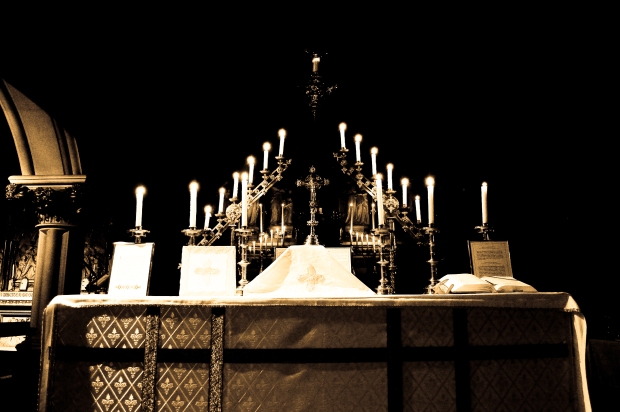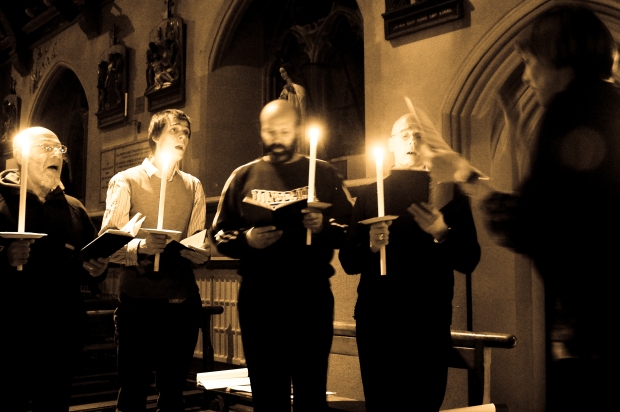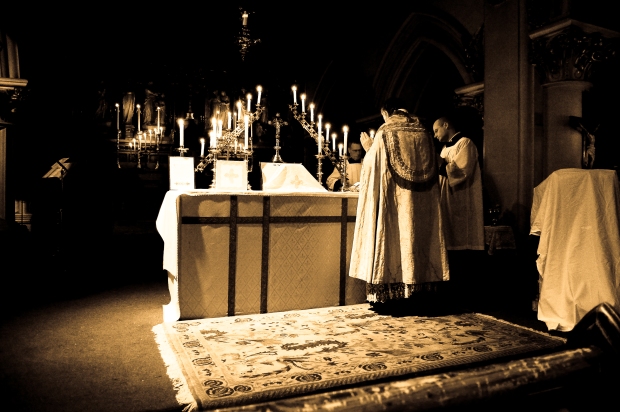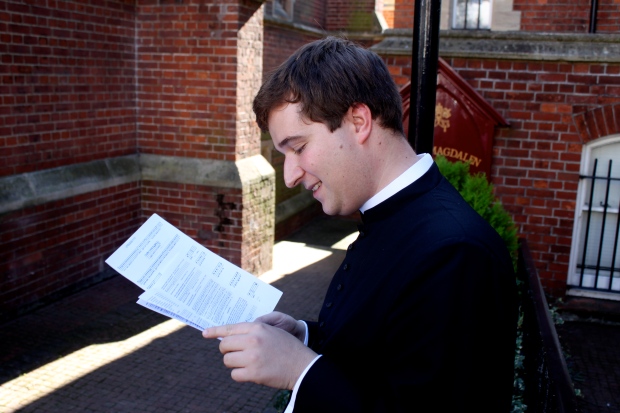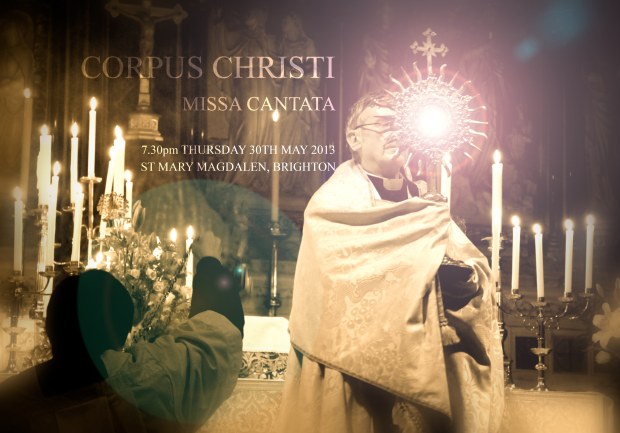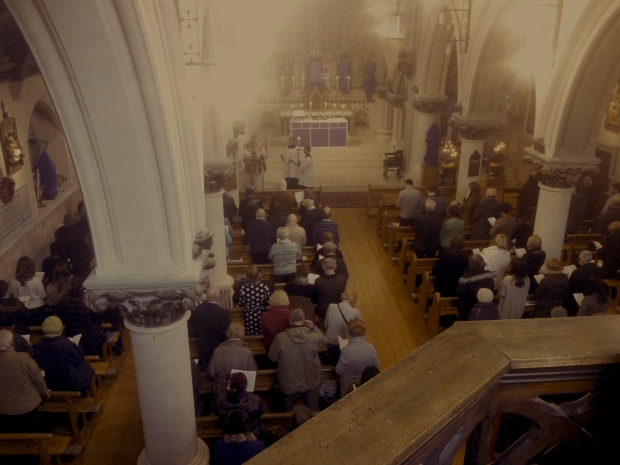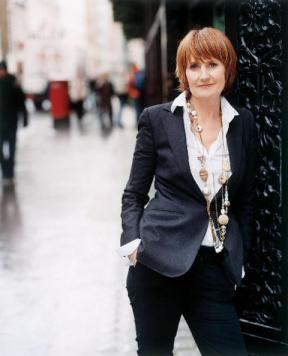It has certainly been a long time since l last wrote anything on this site but l suddenly feel compelled to share my experiences of an absolutely wonderful week on the Isle of Wight surrounded by lots of extraordinarily inspirational and talented people. I was thrilled to be able to attend the Chant Forum hosted at Quarr Abbey, jointly organised by Fr Brian from Quarr, Sr. Bernadette at St.Cecilia’s and Fr Benedict from Pluscarden.

The five day course headed up by music maestro Joseph Cullen along with the Gregorian Chant and early Polyphony academic Giedrius Gapsys, was attended by Benedictines from across the country from Pluscarden down to Ryde.

There were representatives from Douai, Ealing Abbey and Alton Abbey, some of the sisters from Wantage who recently joined the Ordinariate were in attendance, as were some prodigiously talented lay people, including violinist Paul Livingston (straight from the conference in Rome), he is also James Macmillan’s right-hand man at St.Columba’s in Glasgow; the soprano Jennifer Smith, the piano scholar and Quarr oblate Phillip Fowke, the director of music at Our Lady of the Rosary, Blackfen, the Gregorian chant director at St. James’, Spanish Place, Neville McNally, the man behind all the Gregorian chant courses held at St. John’s Cathedral in Portsmouth and so on, oh and me… I sound as if l’m showing off being surrounded by such people, and l suppose l am in a way, but what always strikes me when people are brought together through faith and through a love of singing about our faith, is to discover how incredibly humbling it is to see how equal we all really are in the eyes of the Lord.

So, more about the course.
When we were sent the schedule, the days appeared terrifyingly long. For those not used to the daily vigor of Monastic life, like me, the timetable seemed impossible to fit into one day. Vigils at 5am (l didn’t, but in my defence l did get up early to fit in some of my own work), Lauds, Mass, lessons, Coffee, more lessons, Sext, Lunch, None, more lessons, possibly a talk, more lessons, Vespers, even more lessons, and we hadn’t even got to supper and Compline yet.

And when we weren’t praying, singing, learning and so on, we were eating and l’m rather pleased to report that we did an awful lot of the latter especially as the Abbey food was fantastic.
Joseph ‘no dipthongs thank-you’ Cullen took everyone through the paces of vocal technique trying to get everyone to sing ‘dry’ t’s (as in tutti frutti), to pout lots, to sing Ee-ay as much as possible (you can practice singing Kyrie Eleison) and to try and eradicate over-syllabic singing, think of congregations singing the Pange Lingua, it’s text lumped together in sections like concrete blocks and you know what it sounds like.

Giedrius Gapsys, focused on the often baffling subject of the theory of Octoechos (that’s the eight modes), including looking at the Archaic modes; semiology (that’s all the red and black ‘graffiti’ in the Graduale Triplex.) He also looked at the development of notation from before Guido D’Arrezzo and the ancient practices of singing Gregorian chant. Giedrius could pick out Mode VI formulas adapted from a transposed archaic modes found in a Mode I piece in a snow storm. Ars bene modulandi is all l am saying on the matter.

We had a talks on the history of the church at Quarr and also a fascinating talk on the history of the former Cistercian Monastery located next door to the current Quarr Abbey. You can imagine the surprise of the average day tripper seeking solace in the ruins of an abbey destroyed in the dissolution of the monasteries, when they saw this lot traipsing through the long grass of the site.

The highlight of the week has to have been to be able to participate in the sacred liturgy at Quarr, and to sing the office, a great honour indeed, especially for those of us from the ‘singing an octave higher’ species.

The new Prior at Quarr, Fr Xavier said after two days we were all just starting to sing well together as a choir; he thought another thirty years singing together each day, and we would make the perfect sound.

More photos HERE
